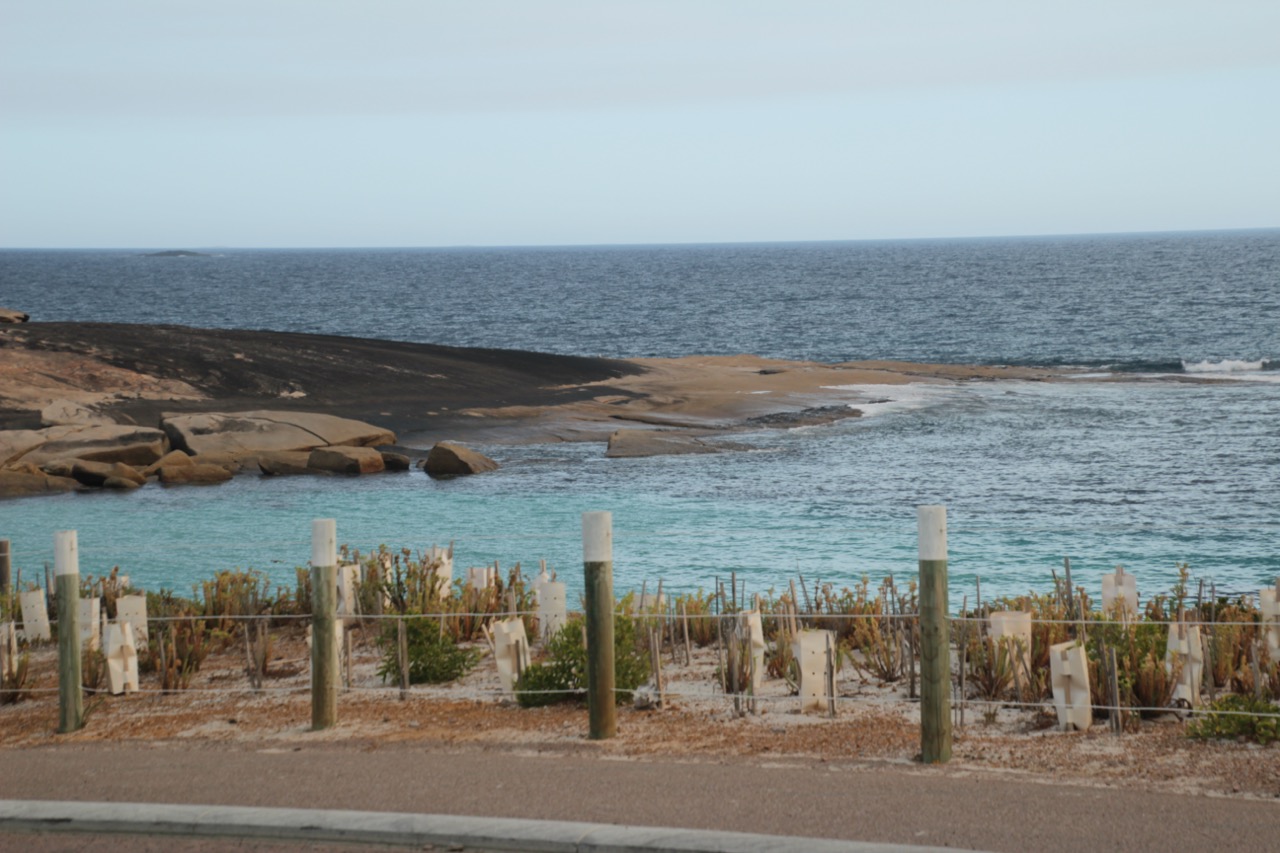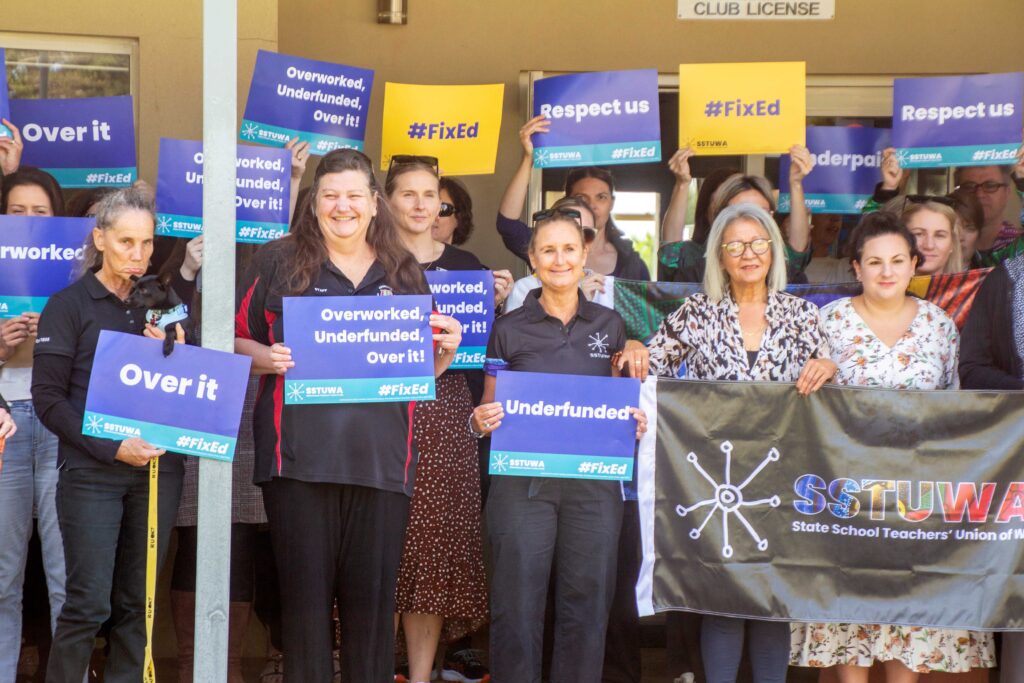Black rock at Salmon Beach. Photos: Chloe Sipeki
LIZ GIBBES
Esperance beach conditions remain under focus for multiple safety and political stakeholders across the state, and one thing that both safety advocates and critics have in common within the polarised debate on fencing, is that few other, foolproof solutions are immediately implementable.
The Shire and Coastal Safety Work Group prepare to try to counter the historical, unsolved problem of drownings in the region that date as far back as the 1800s, although their attempted swift responses are being met with doubts by the general community.
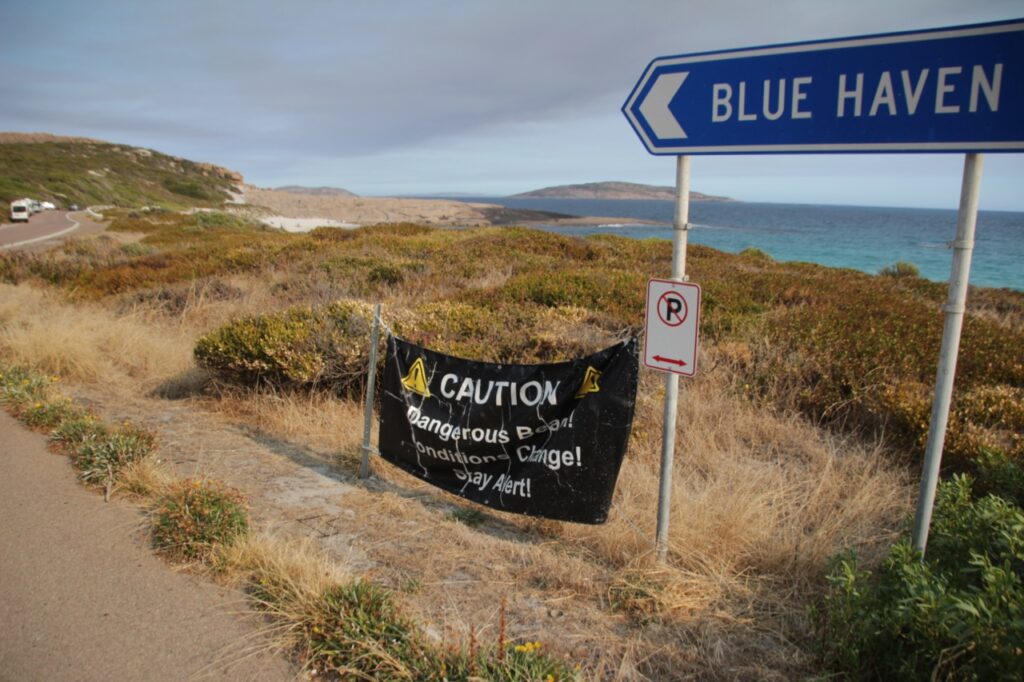
The Shire of Esperance, advised by the Coastal Safety Work Group, plan in the immediate short-term to set up short stretches of fencing and internationally recognisable hazard signage at Salmon Beach, to discourage visitors from going on the slippery black rocks.
These form just two of a range of ideas proposed and now under review by safety experts for viability.
Other ideas have been floated by government stakeholders, such as a proposal from Labor to boost mobile coverage at some remote Esperance beaches, which they say they can deliver later this year.

Attending Salmon Beach this week, the Weekender found existing vinyl signs posted to the beach were badly worn, and construction had not yet commenced.
A Shire representative said, “works including the fencing, which will be similar to existing coastal access fencing, is hoped to be completed in time for the next long weekend in March.”
Criticism has been levelled against the idea of fencing that will lead beachgoers through entry points where they will be more likely to observe new, additional hazard signage.
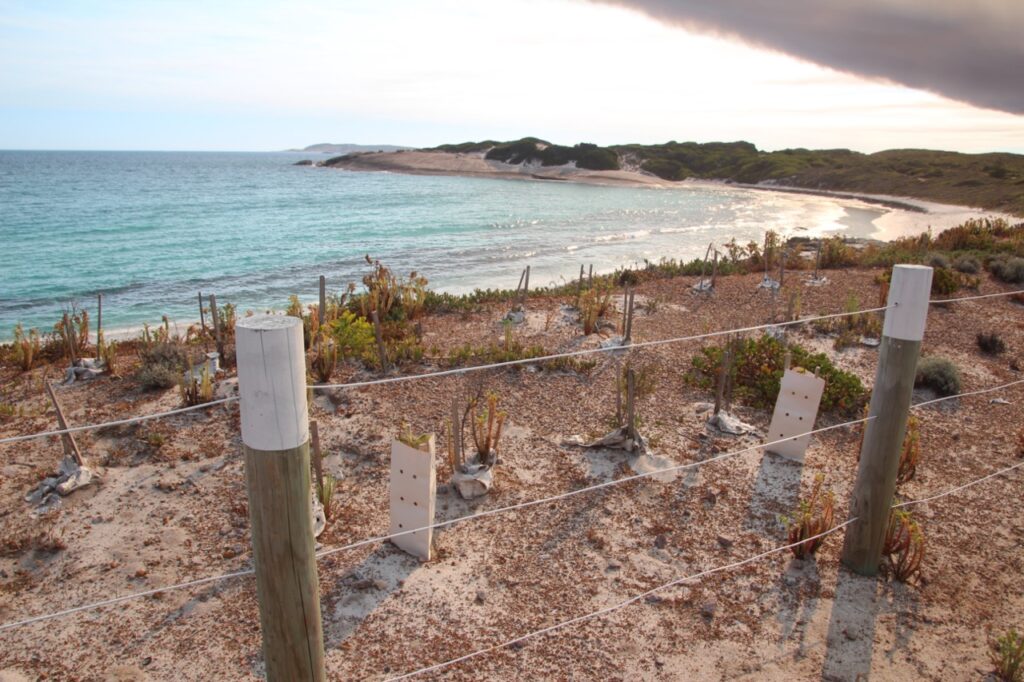
Additionally, responses to the Weekender’s Vox Pops this week (on page 2) about the fencing, might suggest the community is somewhat divided on its potential effectiveness.
To address some adverse comments, myths and negative speculation emergent on social media about new safety plans, the Shire of Esperance has published a True or False webpage for community members.
Turning to the primary concern of improving community safety straight away, the Chair of the Coastal Safety Work Group Chris Brien, who is also the Surf Life Saving Emergency Response Team Coordinator, offered some advice on staying safe on the beach and while rock fishing.
Chris Brien said that it is important to, “match your capabilities with the conditions, if you’re inexperienced don’t go on the rocks – you can catch as many fish from the shore as on the rocks but definitely don’t go on the black.”
He stressed to beachgoers, “don’t turn your back on the ocean.”
“Have a plan if something goes wrong and if you’ve travelled to a remote location an hour out of town, remember that the rescue services are going to have to travel that distance as well,” Mr Brien said.
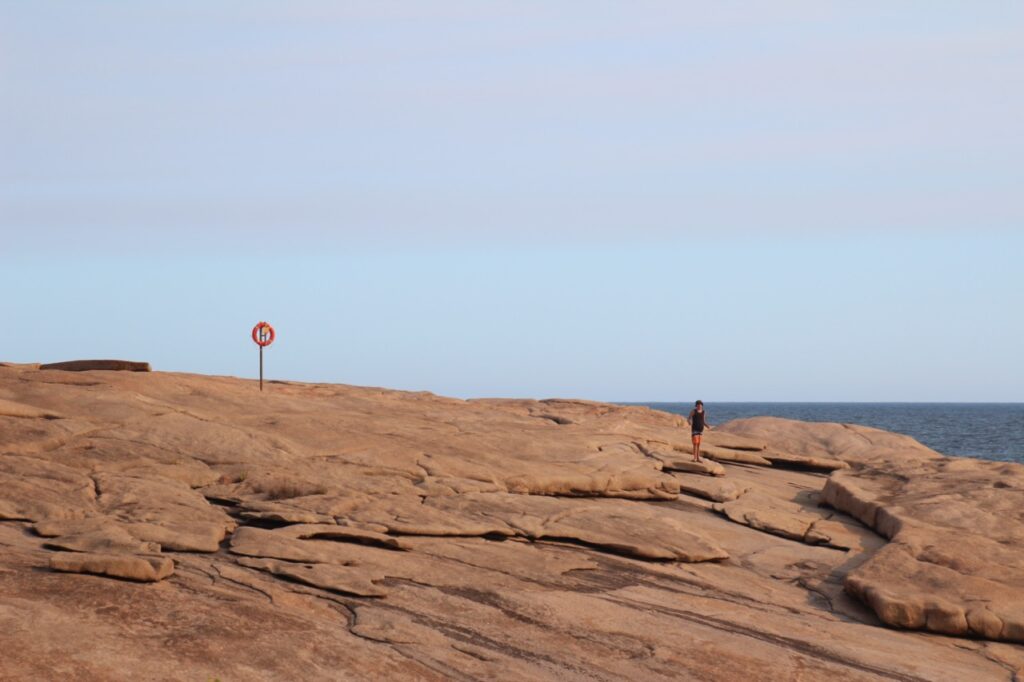
The consideration of safety measures was still under review, he said, and that “anything that preserves life, I’m for.”
“There’s a whole heap of issues that need to be explored at the moment so far as the Coastal Safety Group is concerned – we are looking at all options.
“When we finish, we’ll put those recommendation to the Shire and they can consider them.
“Barrier fencing is being looked at seriously and it’ll probably be done to warn people that they’re getting into danger… it’s going to be the normal fences that we have along the coast.”
Some critics have expressed concern that the fences may impinge on views or activities, and Mr Brien wished to emphasize that “we already have fencing.”
“It’s not a barbed wire-topped fence – it’s just a log post construction, so you can consider where you’re going after that and the danger past that point.”
The Shire states that people may loan life vests from fishing shops in town to enhance their safety while undertaking recreational activities on unpatrolled beaches.
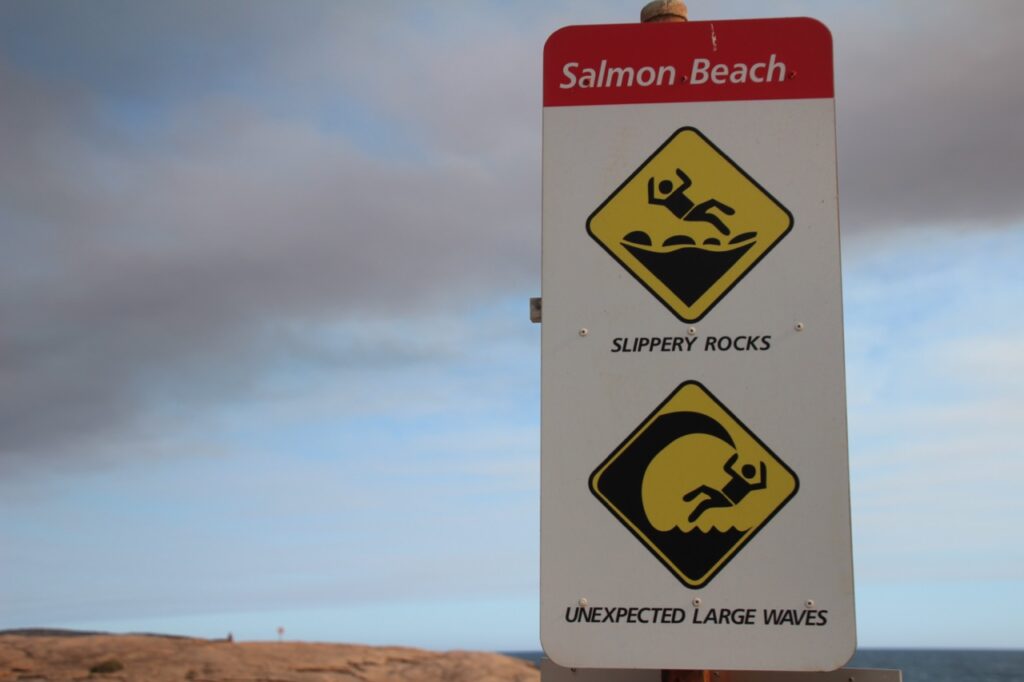
Mr Brien said that people may also be able to loan tether ropes for tying off on the rocks.
The Surf Life Saving Association has recommended patrolled beaches as the safest choice for tourists and visitors to swim.
Presently, that would limit their options to Twilight Beach alone, although added life savers at some beaches along Esperance’s coast is one idea being evaluated for the future.
A Beach Emergency Number (BEN) system comprising a series of numbered signs is in place at many remote beaches and allows callers to quickly identify their location to emergency responders in the event of a safety incident, but mobile coverage is critical.
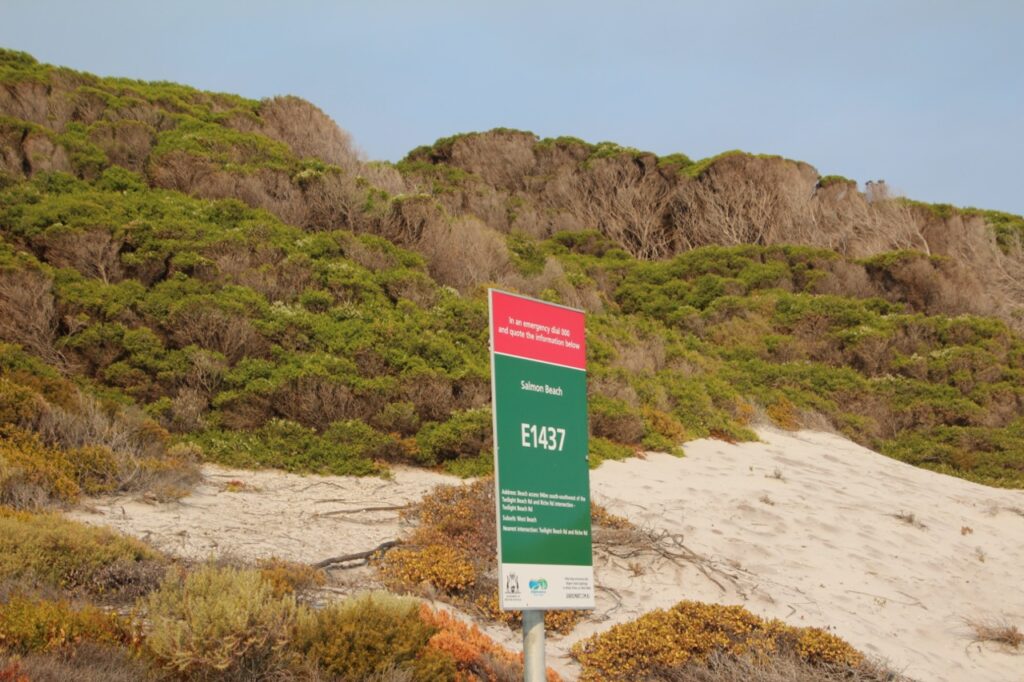
Sites with poor or no mobile coverage have been identified by the Department of Primary Industries and Regional Development in consultation with Surfing WA, regional development commissions, the Department of Biodiversity, Conservation and Attractions, and local governments.
The government has subsequently proposed boosting mobile phone coverage later this year at Observatory Beach, 10 Mile Beach, 11 Mile Beach, 9 Mile Beach, Alexander Bay and Wharton Beach to support the role of remote beaches for recreation.

